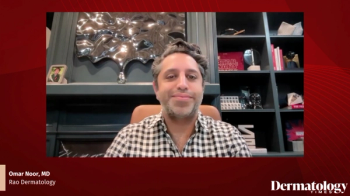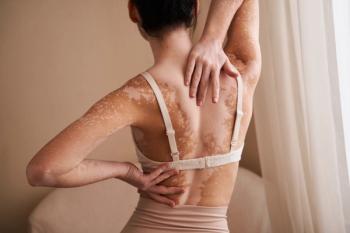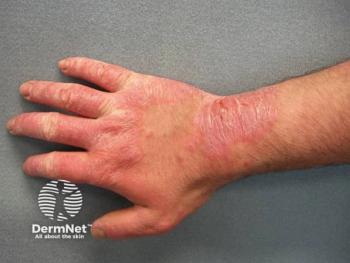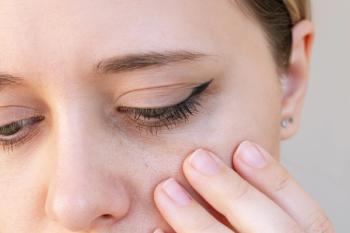
Laser Therapy Gains Ground in Acne Management
Key Takeaways
- Laser therapies, including visible, near-infrared, and mid-infrared lasers, target different acne pathogenesis aspects, showing promise in reducing lesions with minimal adverse effects.
- Emerging 1726-nm sebum-targeting lasers offer targeted interventions for inflammatory acne, with favorable outcomes and minimal long-term complications.
Discover the latest advancements in laser treatments for acne vulgaris, focusing on diverse skin types and effective solutions for acne skin of color.
Acne vulgaris (AV) remains a highly prevalent condition, affecting an estimated 50 million individuals annually in the United States. The multifactorial pathogenesis of AV involves follicular hyperkeratinization, Cutibacterium acnes (C. acnes) proliferation, increased sebum production, and perifollicular inflammation.1 While current guideline-directed therapies—such as topical and systemic antibiotics, retinoids, hormonal agents, and keratolytics—remain the foundation of treatment, their long-term use is often hindered by adverse effects, limited efficacy, contraindications, and issues with patient adherence.2 These limitations have prompted growing interest in laser-based therapies as adjunctive or alternative modalities, leading to researchers publishing literature into the use and advancements being made in laser treatments for AV .3
Visible Light Lasers
According to the recently published research, use of 532-nm potassium titanyl phosphate (KTP) and 585/595-nm pulsed-dye lasers (PDL) has been explored extensively, particularly during the early 2000s. These visible light lasers target porphyrins produced by C. acnes, leading to the generation of singlet oxygen and subsequent bacterial destruction. PDL has shown promise not only in reducing inflammatory lesions but also in decreasing proinflammatory cytokines like IL-8, while promoting anti-inflammatory pathways such as TGF-β expression. A recent meta-analysis concluded that multiple PDL treatments can significantly reduce acne severity, particularly noninflammatory lesions.4 However, their use may be limited in darker skin types due to the risk of post-inflammatory hyperpigmentation (PIH), especially with KTP lasers.
Near-Infrared Lasers
The 1064-nm neodymium-doped yttrium aluminum garnet (Nd:YAG) laser has been studied across various pulse durations, according to researchers—long-pulsed (LP), quasi-LP (QLP), and quality-switched (QS). These devices target water and hemoglobin chromophores, thermally damaging pilosebaceous units and reducing inflammatory mediators such as TNF-α and IL-1. Multiple studies, some involving patients with Fitzpatrick skin types III–VI, report efficacy in improving inflammatory AV with good tolerability and minimal adverse effects. Combination approaches, such as sequential use of PDL followed by Nd:YAG, have shown enhanced outcomes through synergistic mechanisms.5
Mid-Infrared Lasers (MIRL)
Wavelengths such as 1320-, 1450-, and 1540-nm have been used to thermally affect sebaceous glands due to water absorption. These lasers are relatively safe for a range of skin types and have been shown in earlier studies to reduce lesion counts.6 However, researchers stated many studies were limited by short follow-up periods and methodological inconsistencies, including concurrent use of topical and systemic agents. Additionally, several MIRL devices evaluated in earlier trials are no longer commercially available, raising questions about clinical relevance today.
Emerging Technologies: 1726-nm Sebum-Targeting Lasers
To kick off new and upcoming laser therapeutics, researchers noted that in 2022, the FDA cleared 2 1726-nm diode lasers (AviClear and Accure) targeting sebaceous glands via selective photothermolysis. Recent clinical trials report favorable outcomes, including an 87.3% response rate at 26 weeks in 1 study, with mild, transient adverse effects and no long-term complications. Histological studies confirm effective destruction of sebocytes while sparing surrounding structures, positioning this wavelength as a novel and targeted intervention for inflammatory AV.7
Fractional Ablative CO₂ Lasers (FACL)
FACL represents another promising approach for AV, particularly in cases resistant to conventional therapies. Mechanisms include reducing follicular occlusion, stimulating TGF-β, and downregulating pro-acne pathways such as FOXO1 and PPAR-γ. Researchers stated clinical studies have consistently shown reductions in both inflammatory and noninflammatory lesions, with additional improvement in acne scarring. Importantly, these outcomes have been observed across diverse skin types with minimal PIH.
Combining Lasers with Isotretinoin
Historically, combining laser treatments with isotretinoin was discouraged due to concerns over impaired wound healing. However, researchers noted recent studies indicate that combination therapies can accelerate lesion clearance, allow for lower isotretinoin dosing, and improve scarring—without increasing the risk of adverse effects. These findings are reflected in recent expert consensus statements that argue against delaying laser use during or shortly after isotretinoin therapy.
Challenges and Considerations
While recent evidence supports the use of lasers in AV treatment, the study noted significant limitations persist. Many studies lack control groups, use inconsistent assessment tools, and vary widely in treatment protocols. Split-face designs, while pragmatic, complicate blinding and introduce potential bias. Additionally, the durability of laser outcomes remains under-investigated due to short follow-up periods.
Nevertheless, the rationale for incorporating lasers into AV management is compelling. Lasers provide a non-pharmacologic option that may reduce antibiotic reliance—a growing concern amid rising resistance among C. acnes strains. Furthermore, lasers offer early intervention strategies that may prevent long-term sequelae such as scarring and psychosocial distress.
Conclusion
Researchers concluded that lasers represent an evolving frontier in acne management, offering effective, safe, and versatile treatment options for inflammatory and noninflammatory AV. While further high-quality, controlled studies are needed to refine protocols and establish long-term efficacy, current evidence supports their integration into multimodal acne care—particularly for patients with limited tolerance or response to conventional therapies.
References
- Bickers DR, Lim HW, Margolis D, et al. The burden of skin diseases: 2004 a joint project of the American Academy of Dermatology Association and the Society for Investigative Dermatology. J Am Acad Dermatol. 2006;55(3):490-500. doi:10.1016/j.jaad.2006.05.048
- Zaenglein AL, Pathy AL, Schlosser BJ, et al. Guidelines of care for the management of acne vulgaris [published correction appears in J Am Acad Dermatol. 2020 Jun;82(6):1576. doi: 10.1016/j.jaad.2020.02.010.]. J Am Acad Dermatol. 2016;74(5):945-73.e33. doi:10.1016/j.jaad.2015.12.037
- Huerth K, Ohanenye C, Quartey A, Jackson B, Callender V. Established and emerging laser treatments for acne vulgaris in diverse skin types. J Clin Aesthet Dermatol. 2025 Jun;18(6):41-48. PMID: 40575606; PMCID: PMC12189219.
- Yang TH, Li CN, Huang YC. The efficacy of pulsed dye laser treatment for acne vulgaris: A systemic review and meta-analysis. Dermatol Surg. 2022;48(2):209-213. doi:10.1097/DSS.0000000000003345
- Bakus AD, Yaghmai D, Massa MC, Garden BC, Garden JM. Sustained benefit after treatment of acne vulgaris using only a novel combination of long-pulsed and Q-switched 1064-nm Nd: YAG lasers. Dermatol Surg. 2018;44(11):1402-1410. doi:10.1097/DSS.0000000000001565
- Astner S, Tsao SS. Clinical evaluation of a 1,450-nm diode laser as adjunctive treatment for refractory facial acne vulgaris. Dermatol Surg. 2008;34(8):1054-1061. doi:10.1111/j.1524-4725.2008.34206.x
- Sakamoto FH, Lopes JD, Anderson RR. Photodynamic therapy for acne vulgaris: a critical review from basics to clinical practice: part I. Acne vulgaris: when and why consider photodynamic therapy?. J Am Acad Dermatol. 2010;63(2):183-194. doi:10.1016/j.jaad.2009.09.056
Newsletter
Like what you’re reading? Subscribe to Dermatology Times for weekly updates on therapies, innovations, and real-world practice tips.



















